Toothbrushing
Toothbrushing
Good oral hygiene is important
Good oral hygiene keeps your teeth, molars and gums healthy. Brushing your teeth forms the basis for this.
Brush away dental plaque
To keep your mouth healthy, you need to remove plaque. This white-yellow layer is difficult to see and forms on and between your teeth and on the transition to the gums. Dental plaque consists of bacteria and products of bacteria. Almost all our food and drinks contain sugars and starch. Sugars are added to many foods (e.g. soft drinks), but there are also naturally occurring sugars in products (e.g. fruit). The bacteria in the mouth convert sugars and starch into acids. Those acids cause cavities in your teeth. Dental plaque also causes inflamed gums. If you don't remove the plaque properly, the bacteria in the plaque will cause your gums to become inflamed. Plaque that is not removed hardens and calcifies into tartar. New plaque easily adheres to tartar. This causes the gums to become increasingly inflamed. The inflammation can spread and affect the underlying jaw bone. Eventually, so much jaw bone can disappear that your teeth and molars become loose.
dental plaque indicator
Dental plaque is often light yellow in color and therefore not easily visible. Plaque detector is a red dye in tablet form that makes dental plaque visible. After brushing your teeth, chew the tablet and spread the coloring agent over the teeth with your tongue. Then rinse off the excess dye with a small sip of water. The red spots on the teeth indicate where there is still dental plaque. After some time, the dye will disappear by itself.

Toothbrush
Choose a soft bristle brush with a small bristle head. Replace the toothbrush every three months or sooner if the bristles begin to separate.
With an electric toothbrush you can easily remove dental plaque. The electric toothbrush makes the right brushing movement for you. This allows you to better concentrate on the placement of the brush head in your mouth.

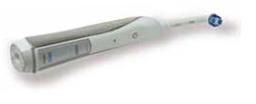
Use fluoride toothpaste
Apply fluoride toothpaste to a dry brush. This creates less foam and gives you more insight into brushing.
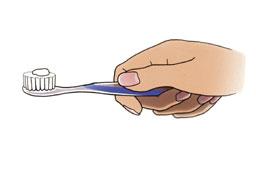
How should I brush my teeth?
There are different cleaning methods. It is often advised to short horizontal movements to make. Pay particular attention to the transition from the gums to the tooth. Place the brush on this spot at an angle of 45 degrees to the gums. The dental plaque disappears by gently moving the hairs back and forth over the places where dental plaque is present. If you hold the brush at the end of the handle between your thumb and the tips of your fingers, apply enough pressure.
Cleaning instruction
Keep to a regular brushing order. For example, brush the teeth in the lower jaw first on the inside, then the outside and finally the top. Brush the upper jaw in the same order. Brush for two minutes twice a day. Preferably brush after breakfast and before going to bed.
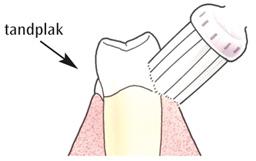
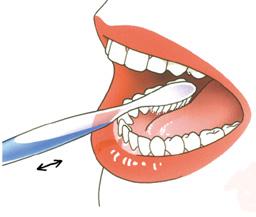
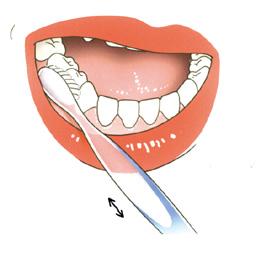
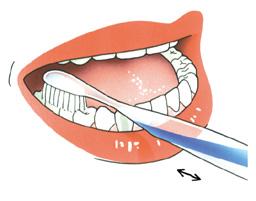


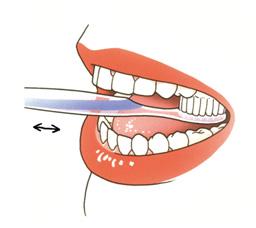
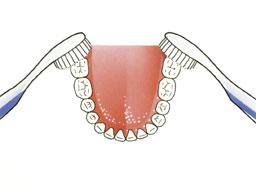
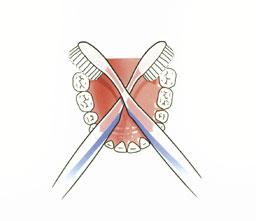
Cleaning tips
- When brushing the lower teeth, pull the lower lip away with the thumb and forefinger
- When brushing the molars on the inside of the lower jaw, place the brush under the tongue if necessary. This is the best way to reach the transition from the tooth to the gum.
- Start with the back molars. Then you can never forget it. Then continue with the rest of the dental arch on the inside and outside.
- It doesn't matter if you brush the lower jaw or the upper jaw first, but always keep the same order.
- Whether you use a regular toothbrush or an electric brush, also clean the space between your teeth with dental floss, toothpicks or interdental brushes. Choose the aids in consultation with your dentist or dental hygienist.
Please note: Excessive or incorrect use of oral hygiene aids can damage teeth and gums.